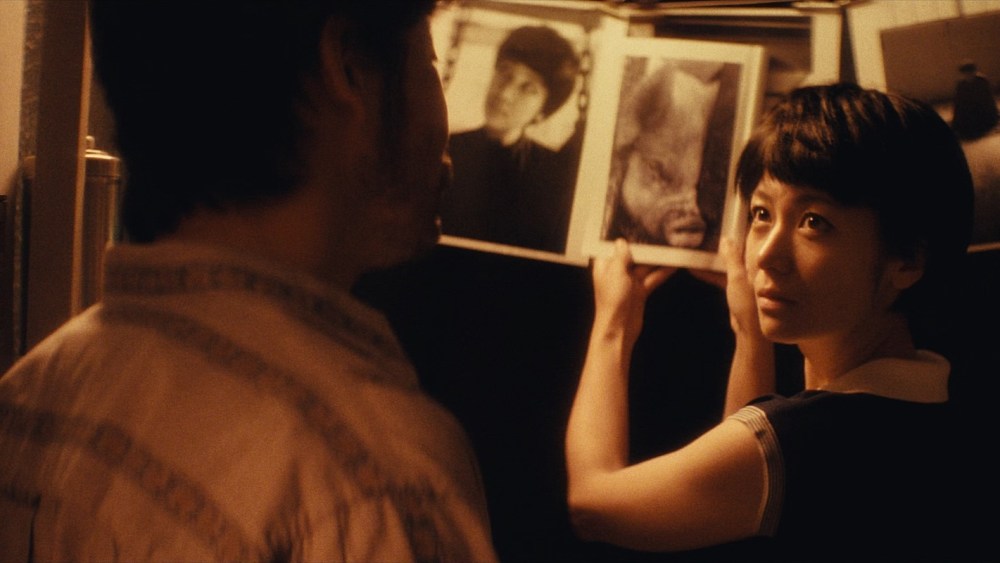“The Crow,” a portrait of proficient however troubled Japanese photographer Masahisa Fukase, is a compelling and fascinating slice of “England Is Mine” director Mark Gill’s life on the fringes of artwork. Combining darkish fantasy with highly effective drama, set primarily within the Sixties and Nineteen Seventies, Gil frames the turning level in Fukase’s life and profession as a love triangle between the photographer; his spouse and collaborator Yoko Crobe Wanibe); Fukase’s inside demons and creative wishes tackle a stunning kind within the type of a large speaking crow. Starring Emmy-nominated “Shogun” actor Tadanobu Asano, an artist whose work continues to be found and celebrated lengthy after his loss of life in 2012, “The Crow” ought to enchantment to these with a style for journey viewers, whether or not they’re accustomed to Fukase or not.
The Crow takes its title from a 10-year-long black-and-white undertaking printed in 1986 to important acclaim, and begins with Fukase’s 1982 assertion: “I’ve change into the crow, I’m the crow.” As Gill explains, this The crow is the embodiment of the ideas in Fukase’s troubled thoughts, and right here manifests itself within the type of a human-sized creature that seeks to make him humiliate the traditional and conformist, as an alternative requiring him to hunt the dangers and extremes that an artist should take.
This daring thought labored from the beginning. Within the opening scene, the creature seems in a seedy bar holding images of Fukase younger and previous, silently declaring himself the central determine within the story about to unfold. The Crow (performed by José Luis Ferrer, who wears a shocking creature go well with and speaks in husky English) is an entity that nobody can see besides Fukase, who typically seems when others are current You discuss to it, it’s a conduit that brings the viewer into the artist’s thoughts.
For a lot of the movie, Gill’s freewheeling video strikes from a drunken, disillusioned, and almost forgotten Fukase hanging out at an area bar in 1992 to the occasions that may form his life and work. Because the crows are by no means far-off, Fukase refuses to take over the household images studio in Hokkaido and leaves residence to check in Tokyo, desiring to show that “images will also be artwork”, which angers his conservative father Sukezo (performed by Kanji Kodachi). ).
Fukase grew to become a member of the colourful avant-garde artwork scene that flourished in postwar Japan, first attracting consideration together with his 1961 collection Kill the Pigs, shot in a Tokyo slaughterhouse. In stark distinction, Fukase’s modern work in industrial images caught his consideration when he requested feminine fashions in a vacuum cleaner gross sales shoot to “play” the gadget like a guitar and pose like a rock star. Sensation from previous prospects. It’s an awesome little second that speaks volumes concerning the battle between previous and new Japan.
Within the dizziness of his new bohemian life, Fukase falls in love with Yoko (Kumi Takuchi), a free-thinking, non-conformist who turns into his mannequin and spouse. In energetic sequences, set to the rhythms of Japanese pop music of the time, Fukase and Yoko created beautiful works that led to exhibitions in New York and fame. Gill’s script deftly captures the insecurities and anxieties that eternally accompany Fukase, who can not help however be consumed by darkish ideas even in occasions of private happiness {and professional} success. Fukase started working in industrial jobs to assist Yoko’s want to coach in classical Noh theater fairly than simply change into a mannequin, and shortly his crow berated him for turning into a househusband, saying “his profession as an artist was a failure.” .
The movie makes Yoko a real collaborator, for whom merely designating spouse and muse will not be sufficient. Her relationship with Fukase and his crows has been aptly described as a guiding drive in his work, which went on to create beautiful pictures, together with a collection of underwater self-portraits after he suffered from an extended interval of despair following his divorce in 1976 . When Fukase complains that Yoko is stealing the eye of the New York media, his lifelong good friend and supporter Shoda Morio (Sousuke Ikematsu) tells Fukase, “She’s the explanation your work sounds so lovely.” Fukase’s The efficiency lives as much as this evaluation. Whether or not it was taking part in Yoko within the Tokyo underground scene of the Sixties, taking part in Edie Sedgwick’s “it” woman, demanding her rights as a girl and artist within the Nineteen Seventies, or Fukase’s devastatingly unhappy The previous couple of years that Takuchi remained in his life had been nothing wanting great.
Beautifully crafted and beautifully photographed by DP Fernando Ruiz, whose tones vary from gorgeously heat and plush to starkly chilly, and with Fukase’s temper swinging wildly from one finish to the opposite, “The Crow” asserts itself “Impressed by true occasions”. The omission of some characters and occasions could trigger some minor debate amongst viewers who know the artist intimately, however as an outline of an important forces in Fukase’s life and work, it rings true and touches on a difficulty that Fukase felt The core of the reply. “Decide up the digicam and scream and bleed,” he stated.

